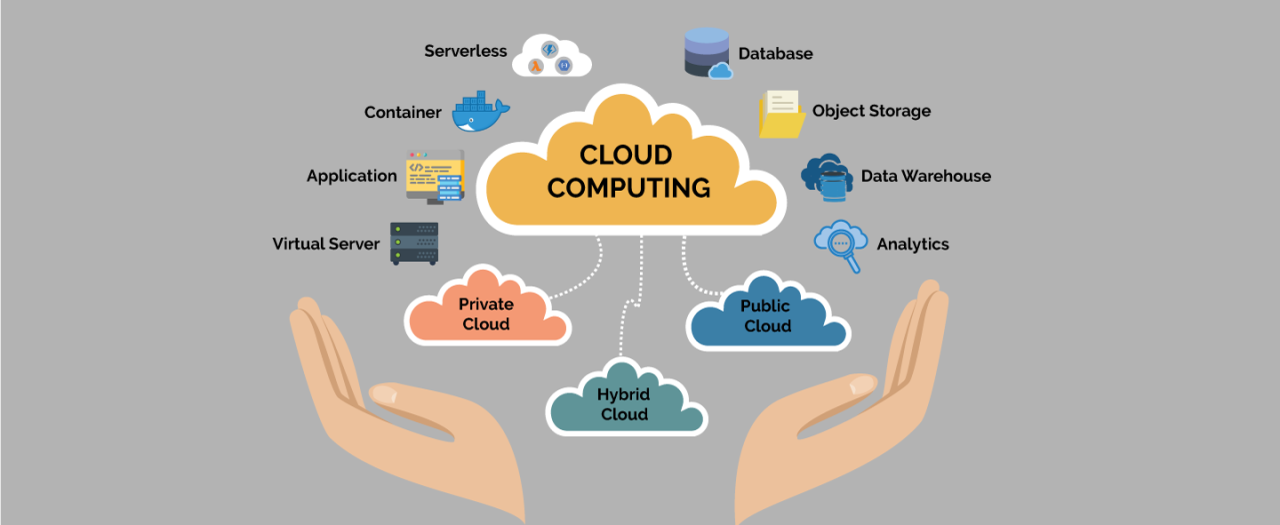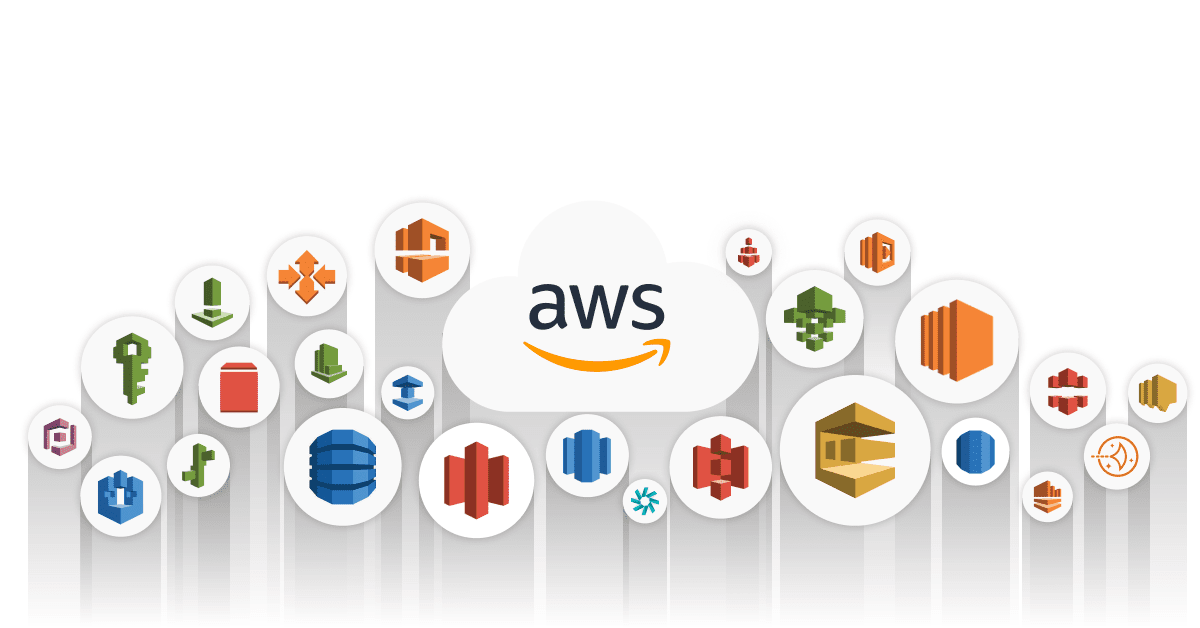In the digital age, the ability to access powerful, flexible, and scalable technology resources on demand has become a cornerstone of innovation and business efficiency. This transformative shift from traditional, on-premises IT infrastructure to internet-delivered services is known as cloud computing. At the vanguard of the cloud computing revolution stands Amazon Web Services (AWS), the world’s most widely adopted and comprehensive cloud platform. For individuals and organizations seeking to harness the power of the internet for their computing needs, the focus often turns to understanding cloud computing AWS – how AWS provides these vital services, what resources are available, and the advantages they offer. Cloud Computing AWS represents Amazon’s expansive global network of data centers and the vast portfolio of IT capabilities delivered from them, including computing power, storage, databases, analytics, machine learning, and more, all accessible over the internet on a pay-as-you-go basis. Understanding cloud computing AWS is fundamental to grasping the modern technology landscape, enabling businesses of all sizes, developers, and innovators to leverage cutting-edge resources, optimize costs, accelerate deployment, and enhance agility in ways previously constrained by physical infrastructure limitations. This comprehensive guide will explore the essence of cloud computing, detail how Amazon Web Services serves as a leading provider, explain the range of AWS services available for cloud computing needs, discuss the global infrastructure supporting cloud computing AWS, and highlight the significant benefits and practicalities of utilizing cloud computing through the AWS platform.
Toc
The Foundation of Modern IT: Understanding Cloud Computing AWS

To fully appreciate the scope and impact of cloud computing AWS, it is essential to first define the broader concept of cloud computing itself and then understand how Amazon Web Services fits into this paradigm as the leading facilitator and provider. This establishes the context for exploring the specifics of the AWS platform in delivering cloud computing.
What is Cloud Computing? A Paradigm Shift in Technology
Cloud computing represents a fundamental paradigm shift in how technology resources are conceived, accessed, and managed. Instead of organizations needing to invest heavily in physical hardware – servers, storage devices, networking equipment – and house them in their own data centers, cloud computing allows them to access these resources as services over the internet from a third-party provider. Think of it as accessing IT infrastructure and software as a utility, much like you would access electricity or water, paying only for what you use.
This model is characterized by several defining principles:
- On-Demand Self-Service: Users can provision computing capabilities, such as server time, network storage, or database instances, automatically and without requiring human interaction from the service provider. They access resources when and as they need them.
- Broad Network Access: The services are available over the network (typically the internet) and can be accessed using various standard client devices and platforms (laptops, mobile phones, etc.). This ensures wide accessibility regardless of geographical location.
- Resource Pooling: The provider’s computing resources are pooled to serve multiple customers in a multi-tenant model. Different physical and virtual resources are dynamically assigned and reassigned based on customer demand, optimizing utilization and achieving economies of scale.
- Rapid Elasticity: Resources can be rapidly and elastically provisioned or released. This means users can easily scale their computing capacity up or down automatically or manually to meet fluctuating demands, seemingly accessing an unlimited pool of resources.
- Measured Service: Usage of cloud resources is monitored, measured, and reported. This metering allows for transparent billing based on consumption, enabling the pay-as-you-go pricing model.
These principles define cloud computing as a departure from traditional IT, offering greater flexibility, scalability, and cost efficiency. The delivery models of cloud computing include Infrastructure as a Service (IaaS) providing basic IT building blocks, Platform as a Service (PaaS) offering a platform for developing applications, and Software as a Service (SaaS) providing ready-to-use software applications over the internet. Understanding these core tenets of cloud computing is vital to appreciating the role of AWS in making them a reality for users worldwide.
Amazon Web Services (AWS): Delivering the Power of the Cloud

Amazon Web Services (AWS) is the entity that delivers the power of cloud computing to a global audience. As a subsidiary of Amazon, AWS has pioneered the commercial cloud computing market since its launch, evolving into the most extensive and broadly adopted cloud platform available today. When discussing “cloud computing AWS,” we are referring specifically to the services and infrastructure provided by Amazon Web Services that embody the principles of cloud computing.
AWS operates a massive, distributed global network of data centers from which it provides a vast array of IT resources as services over the internet. This includes fundamental computing capabilities like virtual servers, scalable storage solutions, managed databases, robust networking tools, and extends to cutting-edge technologies such as artificial intelligence, machine learning, analytics, data warehousing, the Internet of Things (IoT), and much more. AWS makes these sophisticated resources available to anyone, from individual developers to multinational corporations, governments, and educational institutions, allowing them to consume IT resources on demand without needing to build and maintain their own complex physical infrastructure. Amazon Web Services has become synonymous with cloud computing for many due to its market leadership, the sheer breadth of its offerings (encompassing IaaS, PaaS, and facilitating SaaS), and its continuous innovation in delivering cloud computing services. It is the primary platform where the potential of cloud computing is realized for a vast global customer base.
How Cloud Computing Principles Come to Life Through AWS
Amazon Web Services is built upon and actively enables the fundamental principles that define cloud computing. The very architecture and operational model of AWS are designed to provide users with the on-demand, scalable, and measured services that characterize the cloud.
The On-Demand Self-Service principle is fully realized through the AWS Management Console, command-line interfaces (CLI), and APIs. Users can provision, configure, and manage their cloud computing resources on AWS programmatically or through a user-friendly interface, without requiring any interaction with AWS personnel. This ability to instantly access resources is a cornerstone of cloud computing AWS, dramatically reducing the time and effort required to deploy IT infrastructure.
Broad Network Access is inherent to the AWS Cloud. AWS services are delivered over the internet from AWS‘s global network of data centers, making them accessible from virtually anywhere in the world with an internet connection, using standard web protocols and interfaces. This global accessibility allows users to leverage cloud computing AWS regardless of their physical location.
AWS implements Resource Pooling on a massive scale. The physical computing resources (servers, storage, networks) within AWS data centers are pooled and dynamically allocated to serve millions of users worldwide. This multi-tenant architecture allows AWS to achieve significant economies of scale and efficiently distribute resources based on demand, benefiting all users of the cloud computing AWS platform.
Rapid Elasticity is a core strength of cloud computing AWS. Users can easily scale their AWS resources up or down in response to changing traffic, workload, or storage needs. For example, you can quickly launch hundreds or thousands of virtual servers (EC2 instances) to handle a sudden surge in website traffic and then scale back down when the demand subsides, paying only for the resources consumed during that peak period. This elasticity provided by AWS is a key advantage for businesses with variable workloads, enabling cost optimization and performance.
1. https://sanduocpham.com.vn/mmoga-exploring-the-definition-of-cloud-computing-what-it-truly-means/
2. https://sanduocpham.com.vn/mmoga-understanding-the-role-of-cloud-computing-providers/
4. https://sanduocpham.com.vn/mmoga-understanding-the-foundation-what-is-aws-cloud-computing/
The Measured Service principle underpins the AWS pricing model. AWS meticulously tracks and measures the consumption of each AWS service (e.g., CPU hours, data stored, data transferred out, database capacity used). This granular metering allows AWS to offer its cloud computing services on a precise pay-as-you-go basis, providing transparency into usage and costs. This measured approach aligns perfectly with the utility model of cloud computing, where you pay only for the resources you actually consume. By effectively implementing these principles, AWS provides a robust, flexible, and cost-efficient platform that makes the power of cloud computing accessible to a global audience.
Exploring the Landscape of Cloud Computing AWS: Services and Global Infrastructure

Understanding “cloud computing AWS” involves exploring the extensive portfolio of AWS services and the sophisticated global infrastructure that makes their delivery possible. The sheer variety of AWS services caters to virtually every imaginable IT need, while the infrastructure ensures their reliable and scalable availability worldwide.
The Vast Portfolio of AWS Services for Cloud Computing Needs
AWS offers the broadest and deepest set of cloud computing services, continually expanding its portfolio to meet the evolving needs of developers and businesses. This vast range of AWS services allows users to build and deploy virtually any type of application or IT solution entirely within the AWS Cloud.
The AWS service catalog is organized into numerous categories, reflecting the different types of cloud computing capabilities provided. These include:
- Compute Services: Offering various ways to run code and applications in the cloud, from virtual servers (IaaS) to containers and serverless functions (PaaS/FaaS).
- Storage Services: Providing options for storing different types of data, including object storage, block storage, file storage, and archival storage, addressing diverse cloud storage aws needs.
- Database Services: Offering a variety of managed database options optimized for different workloads, such as relational, NoSQL, in-memory, and graph databases.
- Networking & Content Delivery Services: Tools for managing virtual networks, ensuring secure connectivity, and delivering content globally with low latency.
- Analytics Services: Tools for collecting, processing, storing, and analyzing data at scale to gain insights and support data-driven decisions.
- Machine Learning & Artificial Intelligence Services: Providing pre-trained AI services and tools for building, training, and deploying custom ML models.
- Security, Identity, & Compliance Services: Tools for managing user access, protecting data and resources, monitoring activity, and meeting regulatory compliance requirements within the cloud computing AWS environment.
- Developer Tools: Services to support the software development lifecycle, including coding, building, testing, and deployment.
- Management & Governance Services: Tools for monitoring, logging, auditing, and managing AWS resources and costs effectively.
This extensive and growing catalog of AWS services is a core component of cloud computing AWS, providing users with the building blocks they need to innovate and operate their IT infrastructure in the cloud. The ability to mix and match these AWS services allows for immense flexibility in creating customized solutions.
Key AWS Services Powering Diverse Cloud Computing Applications (EC2, S3, RDS, Lambda)
While the full list of AWS services is extensive, some fundamental services are essential to understanding how cloud computing AWS functions in practice. These core AWS services represent common types of cloud computing services utilized by a majority of users.
- Amazon Elastic Compute Cloud (EC2): This is a foundational IaaS cloud computing service on AWS. EC2 provides secure, resizable compute capacity in the cloud as virtual servers (instances). Users can select various instance types optimized for different needs and run virtually any operating system or application. EC2 is the backbone for hosting websites, running enterprise applications, performing batch processing, and much more, representing raw compute power in the cloud computing AWS model.
- Amazon Simple Storage Service (S3): S3 is a highly durable and scalable object cloud storage service on AWS. It’s designed for storing and retrieving any type of data, from anywhere. S3 is ideal for static website hosting, data backups, disaster recovery, data lakes, and content distribution. It’s a fundamental cloud storage aws component for any cloud computing architecture requiring scalable and reliable data storage.
- Amazon Relational Database Service (RDS): RDS is a managed database service on AWS that simplifies the setup, operation, and scaling of relational databases in the cloud. AWS manages tasks like patching, backups, and scaling, allowing users to focus on using their databases. RDS supports popular database engines and embodies the PaaS model for databases, providing managed database cloud computing services.
- AWS Lambda: Lambda is a serverless compute service on AWS that lets you run code without provisioning or managing servers. You upload your code, and Lambda executes it in response to triggers, automatically scaling the compute resources. You only pay for the compute time consumed. Lambda represents a Serverless (FaaS) form of cloud computing on AWS, ideal for event-driven applications and microservices, abstracting away infrastructure entirely.
These examples demonstrate how AWS services provide the core building blocks for various cloud computing applications, enabling users to leverage the power of the cloud for their specific needs. They are tangible examples of cloud computing services delivered by AWS.
AWS Global Infrastructure: Enabling Reliable and Scalable Cloud Computing Worldwide

The immense scale and reliability of cloud computing AWS are underpinned by its robust and geographically distributed global infrastructure, built around AWS Regions and Availability Zones. This infrastructure is designed to provide high availability, fault tolerance, and performance for cloud computing services delivered worldwide.
An AWS Region is a physical location in the world that contains multiple, isolated data centers. AWS has numerous Regions globally, each designed to be entirely independent. Choosing a Region is important for factors like data residency requirements, minimizing latency for users in specific geographic areas, and ensuring compliance with local regulations.
Within each AWS Region, there are multiple Availability Zones (AZs). An Availability Zone is one or more discrete data centers, each with independent power, networking, and connectivity, located in separate facilities within a Region. AZs are interconnected with high-bandwidth, low-latency networking over fully redundant dedicated fiber. Availability Zones are designed to be isolated from failures in other AZs within the same Region. By deploying applications and data across multiple Availability Zones within a single Region, users of cloud computing AWS can achieve high availability and fault tolerance. If one AZ experiences an issue, the application can failover to resources running in other AZs in the same Region, ensuring business continuity for their cloud computing workloads. This redundant architecture is fundamental to the reliability and scalability offered by cloud computing AWS, providing a resilient foundation for mission-critical applications and services across the globe.
Why Choose Cloud Computing AWS? Benefits and Practical Implementation
Understanding “cloud computing AWS” ultimately involves recognizing the significant advantages it provides to businesses and individuals compared to traditional IT infrastructure. The widespread adoption of AWS is a testament to the tangible benefits it delivers in enabling efficient, scalable, and innovative cloud computing.
Tangible Advantages: The Benefits of Cloud Computing Delivered by AWS
Migrating to and utilizing cloud computing AWS offers numerous tangible benefits that drive business value and technological advancement. These advantages are why organizations of all sizes choose AWS as their preferred cloud computing platform.
A primary benefit of cloud computing AWS is Cost Efficiency. The pay-as-you-go pricing model eliminates the need for massive upfront capital expenditures on hardware, data centers, and maintenance. Users only pay for the actual AWS services they consume, allowing for a shift from CapEx to OpEx. AWS also offers various pricing models (like Reserved Instances and Savings Plans) and tools for cost optimization. This cost flexibility is a major driver for adoption.
2. https://sanduocpham.com.vn/mmoga-understanding-the-imperative-data-security-in-cloud-computing/
4. https://sanduocpham.com.vn/mmoga-understanding-the-foundation-what-is-aws-cloud-computing/
Scalability and Elasticity are core benefits of cloud computing AWS. Businesses can easily and rapidly scale their IT resources up or down to match fluctuating demand, avoiding over-provisioning and ensuring they can handle peak loads without performance issues. This agility is invaluable for businesses with variable workloads, rapid growth, or seasonal demand, enabling cost-effective resource management within their cloud computing environment.
Flexibility and Breadth of Services are significant advantages. AWS offers an unparalleled range of cloud computing services, allowing users to choose the best tools for any given task, regardless of operating system, programming language, or database preference. This extensive catalog facilitates innovation and prevents vendor lock-in at the infrastructure level when utilizing cloud computing AWS.
The Reliability and High Availability provided by the global infrastructure (Regions and AZs) are crucial benefits. Cloud computing AWS enables users to design highly resilient applications that can withstand failures, ensuring business continuity and minimizing downtime for critical workloads.
Speed and Agility are also key benefits. AWS allows developers and IT teams to quickly provision resources, deploy applications, and experiment with new technologies, accelerating innovation cycles and time to market compared to traditional infrastructure procurement processes.
Finally, Security is a paramount concern, and AWS provides a highly secure global infrastructure. While security ‘in’ the cloud is a shared responsibility, AWS invests heavily in the security ‘of’ the cloud, providing a robust security foundation and numerous security AWS services to help users protect their data and applications when utilizing cloud computing AWS. These combined benefits make cloud computing AWS a compelling choice for businesses seeking to modernize their IT and drive digital transformation.
Accessing and Managing Resources: AWS Pricing and Getting Started with AWS
Accessing cloud computing AWS resources is designed to be straightforward, facilitated by flexible AWS pricing models and clear pathways for getting started with AWS. Understanding these practical aspects is important for anyone looking to utilize the platform.
The fundamental AWS pricing model for cloud computing services is pay-as-you-go. You pay only for the specific services you consume, based on metrics such as compute time, data stored, data transferred, and requests made. This eliminates the need for large upfront capital investments in hardware. For more predictable workloads, AWS offers discounted pricing models like Reserved Instances (RIs) and Savings Plans, where users commit to a certain amount of usage over a term (1 or 3 years) in exchange for lower rates. AWS pricing varies by service and Region, and tools like the AWS Pricing Calculator help estimate potential costs based on planned resource usage.
Getting started with AWS for business or individual use typically involves creating an AWS account. AWS offers a Free Tier that allows new users to experiment with many AWS services up to certain usage limits for free, providing an opportunity to explore the platform’s capabilities without upfront cost. Once an account is set up, users can access the vast range of AWS services through the management console, APIs, or CLI. AWS for business provides dedicated support options and resources tailored to the needs of organizations of different sizes, from startups to enterprises, helping them migrate to AWS and effectively utilize cloud computing AWS for their operations. The accessibility and flexible AWS pricing model make cloud computing AWS an attractive option for organizations looking to adopt cloud technology.
Trusting the Cloud: Security and Reliability in Cloud Computing AWS Environments
For any organization considering cloud computing, concerns about security and reliability are paramount. Cloud Computing AWS addresses these concerns by building a highly secure and resilient infrastructure, making security and reliability core pillars of their platform.
Security in Cloud Computing AWS environments operates under a shared responsibility model. AWS is responsible for the security of the cloud – ensuring the security of the underlying infrastructure (hardware, software, networking, facilities) that runs all AWS services. Customers are responsible for security in the cloud – the 1 security of their data, applications, operating systems, network configurations, and identity and access management within their AWS environment. AWS provides a vast array of security AWS services (like identity management, network security controls, encryption, monitoring) to help customers fulfill their security responsibilities in the cloud. AWS also adheres to numerous global security standards and compliance certifications, demonstrating its commitment to maintaining a secure cloud computing platform.
Reliability is a key feature of cloud computing AWS, achieved through its globally distributed and redundant infrastructure. AWS Regions, each containing multiple, isolated Availability Zones (AZs), are designed for fault tolerance. Deploying applications across multiple AZs within a Region ensures high availability; if one AZ experiences a failure, the application can continue running using resources in other AZs, minimizing downtime. AWS continuously invests in its global network infrastructure to ensure high performance and reliable connectivity for delivering cloud computing services. This emphasis on building a robust and resilient platform is a fundamental benefit of cloud computing AWS, providing users with a trusted environment for running their mission-critical applications and data.
In conclusion, cloud computing AWS represents the delivery of a vast and deep portfolio of IT resources and services over the internet by Amazon Web Services. AWS embodies the core principles of cloud computing, offering on-demand access, rapid elasticity, resource pooling, and measured, pay-as-you-go AWS pricing. The platform provides hundreds of AWS services, ranging from fundamental compute (EC2), storage (S3, aws cloud storage), and databases (RDS) to advanced AI and analytics, all delivered from a secure and reliable global infrastructure built around AWS Regions and Availability Zones. Key benefits of cloud computing AWS include significant cost savings, enhanced scalability, increased flexibility, improved reliability, and accelerated speed to market. Businesses migrate to AWS and leverage cloud computing AWS for their business needs to achieve these advantages. Getting started with AWS involves creating an account and utilizing services under flexible pricing models. Cloud computing AWS has become the standard for accessing modern IT resources, empowering innovation and digital transformation worldwide through its comprehensive cloud computing services.















